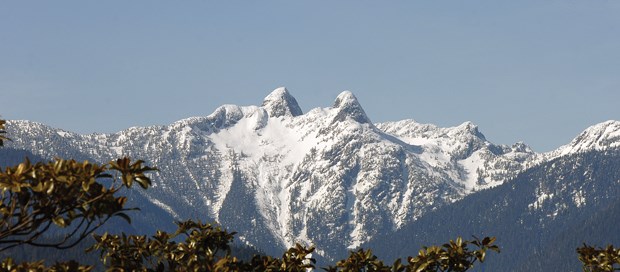While this year’s smaller-than-normal snowpack is not expected to impact the North Shore’s water supply this summer, Metro Vancouver has put some water reserves in its back pocket in case of a drought.
Snowpack measurements conducted in the Seymour and Capilano watersheds by Metro staff in early April suggest the spring run-off is expected to be well below normal, but there is no cause for alarm, according to North Vancouver City Mayor Darrell Mussatto, Metro’s utilities committee chair.
“The reality is, the snowpack is not as big an issue as people think it is,” said Mussatto.
In fact, rainfall is what the reservoirs rely on to stay stocked with fresh drinking water throughout the summer. Metro also has water reserves in three alpine lakes that it can tap into, and the ability to secure extra H2O from the Coquitlam reservoir, which is managed by BC Hydro.
In April, the water level reading at the Capilano reservoir was 99 per cent of summer storage capacity, while Seymour Lake was at 87 per cent capacity. As of last week, both lakes are in good shape at 99 per cent capacity, thanks to some late April snowfall.
Still, Metro is not taking any chances and has taken steps to ensure they are well stocked with water for the summer. “We are able to purchase extra water should we need it in dry spells, and this year we’ve secured a bit more than we normally would,” said Mussatto.
Each year the regional district asks BC Hydro to set aside a specific amount of water. In 2014, Metro paid Hydro $630,000 for 50,000 million litres, while this year it’s asking for an extra 18,200 million litres for a total cost of $862,000.
Metro is also working on a long-term plan to revise its licence agreements with BC Hydro to secure more drinking water for the future, and to increase the capacity of the North Shore reservoirs.
Just last week a new tunnel connecting the Capilano reservoir with the new Seymour-Capilano Filtration Plant came online. Under the new filtration system, up to 1.8-billion litres of pure drinking water is pumped out per day.
In an effort to preserve this precious commodity, Metro has mounted a campaign that aims to educate people on how to not waste a drop of the mountain fresh water.
Since 2009, when the region experienced a severe water shortage, Metro has implemented stringent summer lawn-sprinkling restrictions; watering is now limited to mornings before 9 a.m.
The regional district also established a target for reducing per capita water use during peak periods by five per cent by 2015. A recent Metro staff report revealed regional water consumption has dropped by 2 per cent per capita each year since 2010 on days of peak water use, but an increase in population means the overall use is still up.
Mussatto said a move towards installing low-flush toilets in homes and workplaces is helping with water conservation efforts, but there is a more immediate action residents can take: give up their green lawns.
“The other thing we ask people to do is, if you don’t mind looking at brown grass,” said Mussatto. “Grass doesn’t die, it just goes dormant in the dry seasons.”



